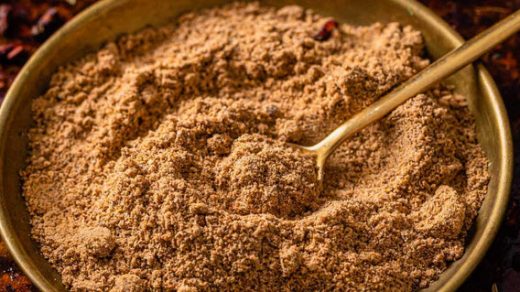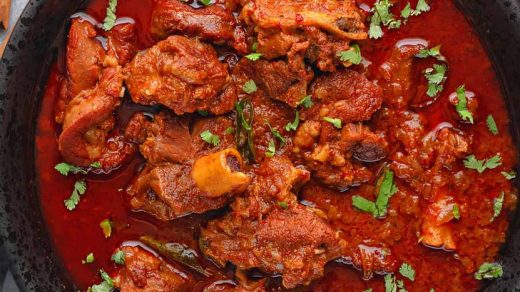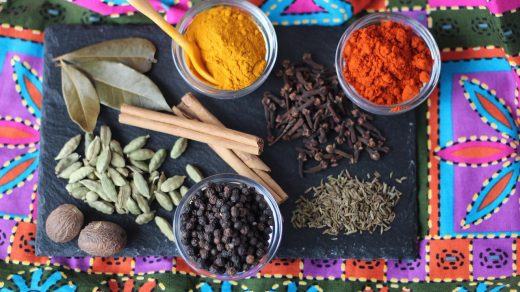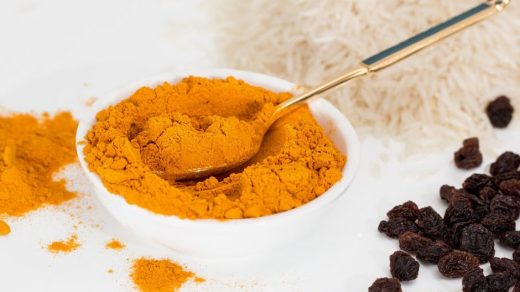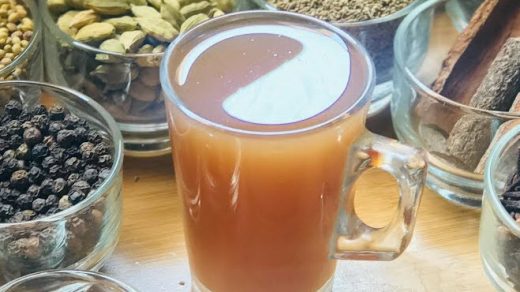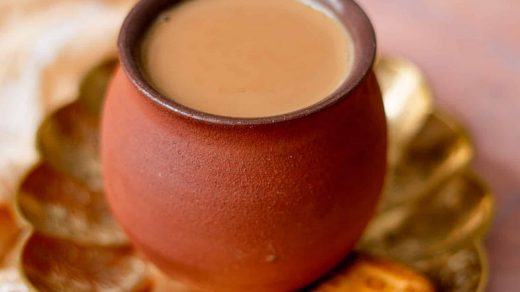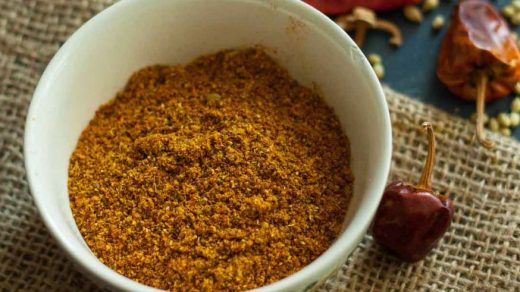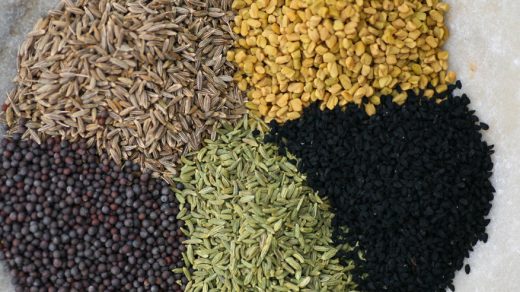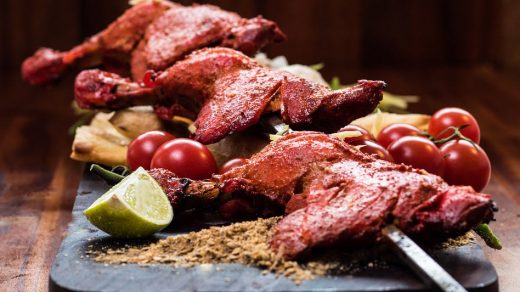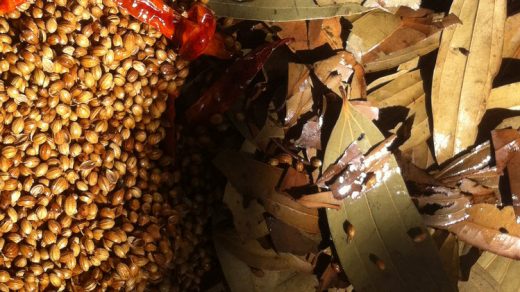The spice mix bafat masala comes in many different versions but commonly include dried and ground chilli peppers, mustard seeds, cumin seeds, coriander seeds, black peppercorn, cinnamon, cloves, and turmeric. The Bafat masala is strongly associated with Mangalorean cuisine, and is especially common in pork dishes.
Recipe for Mangalorean Pork Bafat (Dukra Maas)
This flavourful pork stew developed in the Catholic population of Mangalore. It is a festive dish commonly served with steamed rice dumplings or bread buns. Ask five different catholic families in Mangalore for the recipe for Dukra Maas and you are likely to end up with (at least) five different recipes. The recipe below is just one of many available versions of Dukra Maas.
Ingredients
To cook pork
- 700 grams pork loin
- 2-3 cups of water (adjust as needed)
- 8 cloves
- 2 inches of cinnamon stick
- 2 sprigs of curry leaves
- 1 tablespoon vinegar
- Salt to taste
For making slices
- 2 large onions
- 1 inch of ginger
- 3 green chillipeppers (without the seeds)
For roasting and grinding
- 12 red dried chillies
- 10 black pepper corns
- 8 fenugreek seeds
- 5 garlic flakes
- 3 tablespoons coriander seeds
- 1 teaspoon cumin seeds
- ½ teaspoon turmeric powder
- ½ cup of water, or as needed DO NOT ROAST
Other
- 2 tablespoons tamarind extract
- More water, as/if needed
- Salt to taste
- Vinegar to taste
- ½ teaspoon garam masala powder
Instructions
- Cut the pork into pieces, 2-3 cm each
- Add the pork and the other ingredients from the “To cook pork” list to a large cooking pot with a thick bottom. Cook over medium heat until the pork is tender. Set aside.
- While the pork is cooking, slice the onion, ginger and chillies from the “For making slices” list.
- Put the ingredients from the “For roasting” list (but not the water) in a hot dry skillet and roast until they start to give off a lot of aroma. Grind with a mortar and pestle, gradually adding ½ cup of water to make a paste.
- Add the spice paste to the cooked pork. Also add tamarind extract. Then, add water – just enough to achieve a thick gravy consistency. Cover and bring to a boil.
- Add the slices to the boiling pork stew. Stir, and check if you want to add some salt. Cover with a lid and cook on medium heat until the onion slices are soft.
- Add vinegar to taste.
- Sprinkle over garam masala powder.
- Remove from the heat and serve.
This is a great dish to make in advance and freeze, because the taste actually improves with reheating.
Mangalorean cuisine
Mangalore (Mangaluru) is a major port city in western India, between the Arabian Sea and the Western Ghats mountain range. Mangalore has been a notable port city ever since ancient times. Today, an estimated 75% of India´s coffee and cashew export leaves from Mangalore.
This is a multi-lingual city where the administrative languages Kannada and English are spoken alongside regional languages such as Tulu, Konkani, Beary and Havigannada.
Mangalorean cuisine is a collective term for several different cuisines that are widespread in the city, e.g. Udupi, Tuluvas, Mangalorean Catholic, Bearys, Rajapur Saraswat Brahmins, and Goud Saraswat Brahmins.
Since Mangalore is a coastal town, fish features heavily in Mangalorean cuisine, except within strictly vegetarian communities. There are many Mangalorean curries – both vegetarian and non-vegetarian – and they commonly include coconut, curry leaves, ginger, garlic and chili.
Examples of popular dishes in Mangalore:
- Bangude Pulimunchi (spicy sour silver-grey mackerels)
- Kori Rotti (rice flakes and gravy)
- Chicken Ghee Roast
- Chicken Sukka
- Patrode (vegetarian dish with colocasia leaves)
- Chane gashi (chickpea curry)
- Masal Dosa and Neer Dosa (types of rice pancake)
- Mutton Biryani
- Pork Bafat
- Sorpotel (a dish heavily influenced by Portuguese cuisine)
Mangalore bajji is a snack that includes, among other things, maida flour, rice flour, curd and coconut. Other examples of popular snacks in Mangalore are pulimunchi, sandige and happala.
